 By Dr. Nigel Dunnett
By Dr. Nigel Dunnett
Professor of Planting Design and Vegetation Technology
Director, The Green Roof Centre
Department of Landscape
University of Sheffield
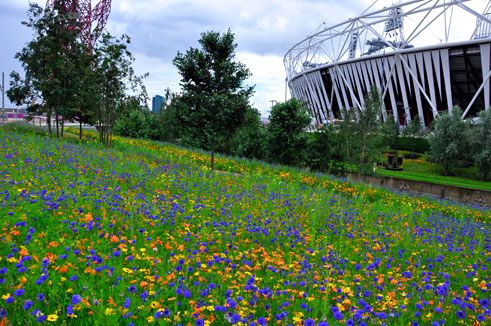
The London Olympic Park is the largest new urban park to be created in Europe for 150 years. For the first time in Olympic history, the park is as important as the buildings, and for many people it is the star of the show.
Although none of the main sporting venues have green roofs, they have been used widely on the athlete’s village. However, because of the huge security operation carried out during the building of the games, and during the operation of the games, access and publicity has been virtually non-existent.
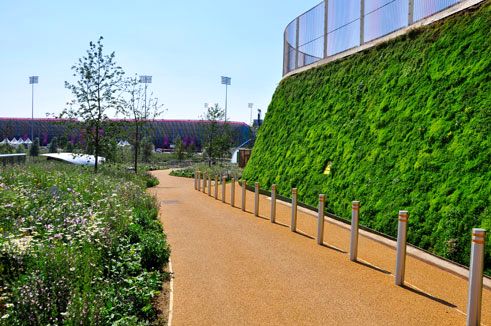
Yet, there is a very prominent living wall next to the Olympic Velodrome. Composed of a vertical sedum mat system, it has been fertilised and irrigated to the point that it presents a verdant bright green, highly textural surface.
In my opinion, although this is not the best approach to take for widespread use, it has definitely raised the profile of living walls: the crowds of people of have felt it, examined it and photographed are a testament to that.
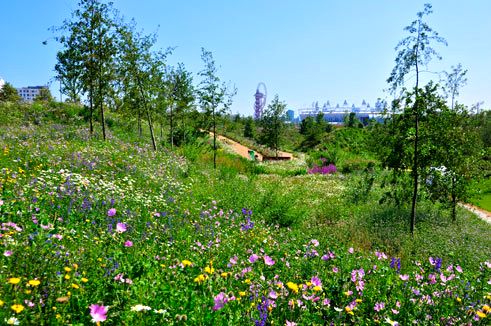
I have been involved with the planting in the Olympic Park from the outset in 2007, responsible with my colleague James Hitchmough, for developing the overall planting strategy for the park, and then producing the specifications for vegetation mixes, and, over the last two years, working on site with the landscape contractors to install and manage the plantings.
Unlike most urban parks – where mown lawns are the norm with groups of standard trees, and if there are any wild areas, they tend to be hidden away from the high profile locations – the Olympic Park turns this concept on its head, with meadows, woodlands and wetlands being the main planting types within which sit areas of spectator lawns, where huge outdoor TV screens relay the action.
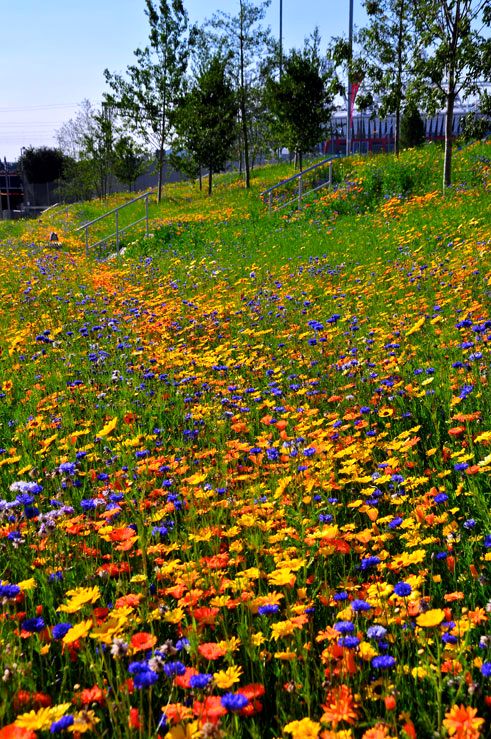
From the outset we wanted to make this a very forward-looking park, and highly ecological and sustainable. It has been a major challenge: everything had to be flowering and performing at its best on the day of the opening ceremony on July 27, 2012 and then to continue looking good for a further 7 weeks right through to the end of the Paralympics.
We made the meadows flower-rich, partly to create a visual spectacle for the 5 million visitors who will be at the site over the summer, but also to attract as many pollinating insects as possible.
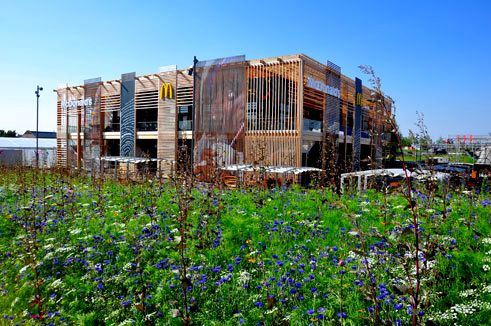
In fact, biodiversity considerations have been paramount: the park only received planning permission because it had a biodiversity action plan to create 125 acres of new native habitat (this makes up nearly all of the greenspace of the park). Even the McDonald’s is set in a flowering meadow!
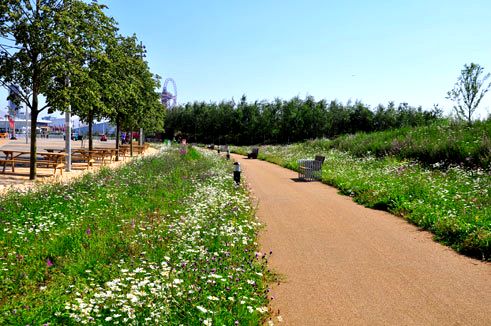
For the first time in the UK, water-senstive design principles lie at the heart of the design of a major public park. The Landform in the park is dramatic, with a series of artificial hills and valleys. All the runoff from the hills drains to bioswales, which also line all of the main paths through the park, and the main pedestrian concourse.
These swales are planted with species-rich wet meadow vegetation at their base. The water drains to collecting ponds and rain gardens.
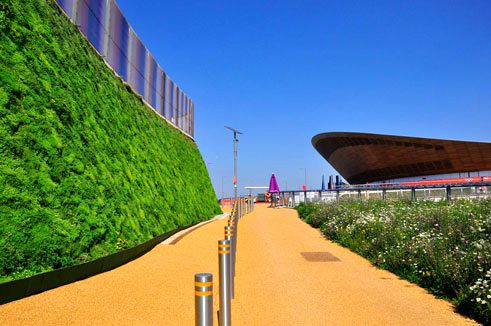
The Olympic Park has been created on an area of derelict and contaminated land in east London. When they visit, people are genuinely amazed by the sight and experience of millions of wildflowers all around them, covering such large areas, and surrounding the main Olympic Stadium and the other venues.
We hope this is a turning point in the way that we view urban landscapes in the UK: no stronger evidence is needed that people love flower-rich, natural surroundings than the response there has been to the park.
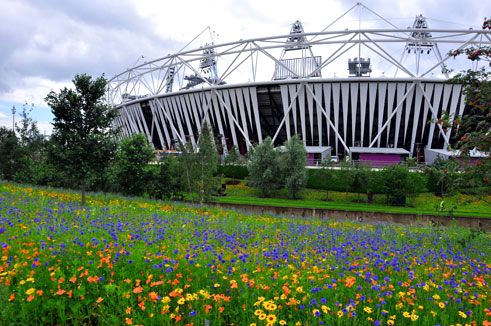
Dr. Nigel Dunnett
Professor of Planting Design and Vegetation Technology
Director, The Green Roof Centre
Department of Landscape
University of Sheffield
Weston Bank, Sheffield S10 2TN
Tel: 0114 2220611
n.dunnett@sheffield.ac.uk
 Greenroofs.comConnecting the Planet + Living Architecture
Greenroofs.comConnecting the Planet + Living Architecture
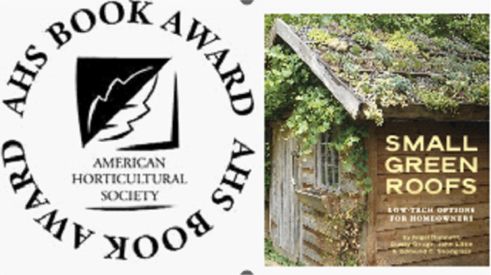





Diogo Correia
Dear Nigel,
I have visited the Olympic park this week and was amazed with the diversity of plants used on site. I am a landscape architect from Lisbon and am very curious about some of the plant species used.
Is there a planting list for the plants used on site? Could you please provide that information?
Kind regards
Diogo Correia
London Olympic Park: | hydroville.com
[…] Subscribe to the comments on this post […]
Alex
I agree – would love to see a plant list of both annuals and perennials
Urban Gardening Reaches New Heights With London Olympic Park
[…] here at Urban Gardening Digest, to honor this achievement as we profile an article we found over at Sky Gardens by Dr. Nigel Dunnett, of the University of […]